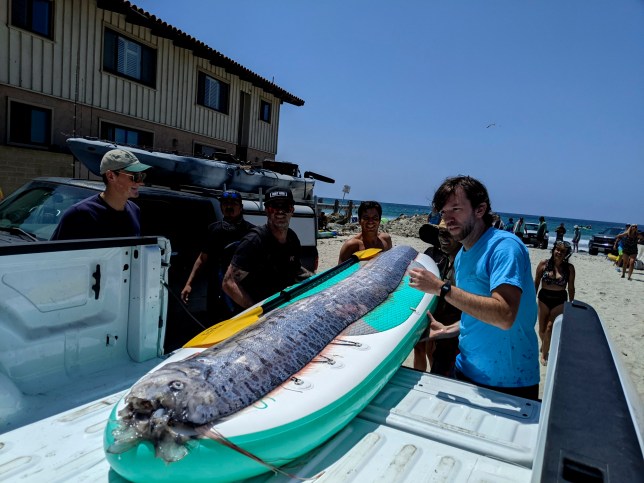A rarely seen creature called an oarfish, historically regarded as a harbinger of doom, has been spotted for the second time this year off California’s coast.
The ‘doomsday fish’ was found by a PhD student from the Scripps Institution of Oceanography at the University of California, after it washed ashore in Encinitas last week.
The student reported that the fish was between nine and 10-foot long – smaller than the 12-foot oarfish that stunned snorkellers off the San Diego coast earlier this year.
The creatures., which have long bodies similar to serpents, have been nicknamed ‘doomsday fish’ because they are seen as predictors of bad news, particularly disasters or destruction. Legend has it that if you see an oarfish, it is a warning sign that natural disasters such as earthquakes are about to occur.
Twenty oarfish were found on beaches in Japan just before the devastating 9.0 magnitude earthquake in 2011.
On Sunday morning, a weaker 6.0 magnitude quake rocked the country’s southern islands, with an epicentre 10km below sea level.
This month’s ‘doomsday’ discovery comes after a group of kayakers came upon a dead oarfish floating on the water.
The 12-foot oarfish was brought ashore in La Jolla Cove on August 10 and left marine scientists stumped.
The finds are unusual occurrences. The creatures live in the mesopelagic zone, a region of deep water where light cannot penetrate.
Only 20 oarfish have been documented washing up in California since 1901, according to Scripps Institute experts.
Marine scientists have suggested that shifting weather patterns could be the cause of more regular sightings.
Scripps assistant director of communications Brittany Hook told KXAN: ‘Thanks to the work from these locals, scientists will be able to further study this mysterious species as it will become part of the Marine Vertebrate Collection at Scripps, one of the largest collections of deep-sea fish in the world.’
Get in touch with our news team by emailing us at webnews@metro.co.uk.
For more stories like this, check our news page.
MORE : Spider smuggler arrested after police found 300 tarantulas strapped to his body
MORE : Full list of areas sharing £1,000,000,000 funding for London-style buses
MORE : Nigel Farage to launch legal action after Manchester Airport incident
Get your need-to-know
latest news, feel-good stories, analysis and more
This site is protected by reCAPTCHA and the Google Privacy Policy and Terms of Service apply.









